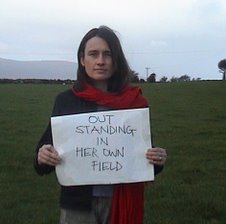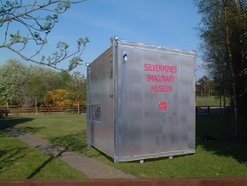Miles 205
Carbon Footprint 58kg
Expenses 25 euro on food and various coffees; mini-DV tape.
Left home at 7.30 am; very windy. Video camera set up to film the journey for the first time. Crossed into Tipperary at Killaloe/Ballina, took the lakeside route through Portroe and onto Netwown, where I added a leprechaun to the image bank, then took a left for Dromineer just outside Nenagh.

Back to Nenagh; set myself up in the office, but discovered cannot access internet through my laptop.Will have to check out local library and wireless access at hotels. Interview with a couple of people about the context, using the following list of questions;
What makes North Tipperary unique or culturally distinct?
What is the most interesting thing about North Tipperary?
Who is the most interesting person I could talk to in North Tipp?
Is there something here that fascinates you?
What is the most overlooked aspect of North Tipp?
Is there a part of the history that has been largely overlooked?
What are the areas of friction or tension?
What is the best hope for the future of the place?
Spent a couple of hours in discussion with Martina about various things concerning rural arts development. Noreen at CAVA asked me to write and article for their newsletter. Might use that as an opportunity to make contact with local 'enthusiasts' and hobbyists. Also, want to track down informal, themed environments.Drove to Thurles in the daylight, beautiful road, such a different experience from doing it at night. On a whim took a turn for Templederry; a community that requested increased arts activity. Up into the mountains beyond Templederry, obviously not tourist country, nicer for that.
www.mermaidturbulence.com
On the way home I had an absoloute brainwave, which I am not going to detail here! Need to keep it close to my chest while it develops.


